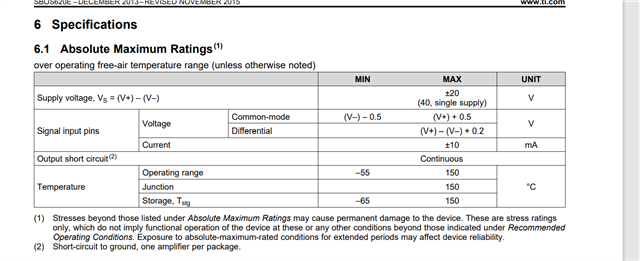Other Parts Discussed in Thread: OPA192
Hi Dear,
I have read the manual of OPA2387, and there is a maximum value of Differential in Chapter 6.1.as follows

May I ask how to understand this parameter and how customers consider it when designing circuits?



